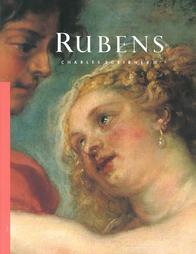Review of Rubens & Bernini


to read Rubens, click: http://www.scribd.com/doc/232901914/Rubens
to read Bernini, click: http://www.scribd.com/doc/253784039
by Charles Scribner III, Harry N. Abrams, Inc. New York, New York, 1989 & 1991
Charles Scribner III is a man of many parts, so that those of his friends who have known him in one capacity are often surprised to find him also starring in another. I have seen him at work chiefly as a publisher and editor —very perceptive and sympathetic in that role. Yet in his office in the old Scribner building on Fifth Avenue he kept a piano, and it appears that as a musician he might have made his way. Or as an actor: I don't believe any student while at St. Paul's has shown himself so gifted a Shakespearian player.
It is, however, the field of art history that most strongly tempts him away from the family tradition of book publishing. As an author, as a lecturer increasingly sought after by major institutions, Charles Scribner revels in a sense of liberation and accomplishment.
The two books before us, volumes in the Abrams' Masters of Art series, are examples of how an art historian ought to deal with great men and great works. In the first place, Mr. Scribner writes well. Professional jargon is absent; polemics and overspecialized disputations are avoided. Yet the author shows an easy mastery of his sources, an encyclopedic knowledge, and an evident enjoyment. Rubens and Bernini are the kinds of cultural giants that test the mettle of a serious historian and critic, and it is the highest praise to say that these two books do justice to their subjects.
Rubens (1577-1640) was a figure so massively gifted that a contemporary had the audacity to declare that painting was the least of his achievements. Indeed, as a personality dominating the late sixteenth and early seventeenth centuries, as an experienced diplomat, as a serious scholar, antiquarian, and humanist, he would have had a place in history even if he had never touched brush to canvas. Yet when he did, what prodigious, what almost divine, creations! Bernini, born twenty years later than Rubens, likewise extended himself beyond his particular art as a sculptor. Painter, architect, conceiver of public spaces and vast monuments —in Mr. Scribner's phrase the "impresario of the Baroque"—he moved with a sure touch from child wonder to illustrious artist.
Mr. Scribner's method in each of these books is to deal in an extended essay with the historical context of each man's life, with the making of his career, and with the nature of his accomplishment. This section is followed by illustrations in color, accompanied by critical comments on the individual works.
An example of these comments must suffice. "The Rape of the Daughters of Leucippus" is a breathtaking composition of two female and two male figures, with two huge horses interwoven with the human limbs and torsos. Something more than at first meets the eye is evidently going on here. Mr. Scribner notes that the two males, Castor and Pollux, were better known as calmers of the sea and as horse tamers than as abductors; furthermore, "the poses appear as more rhetorical than reactive," for "the young men married the princesses and were model husbands.'' The solution to the painting's mystery, he goes on to suggest, is indicated by a figure one had not even noticed at first, a cupid holding one of the horses' reins. "This figure alone looks out of the picture toward the viewer and ensures the felicitous union of heavenly and earthly love.''
With such a guide through masterpieces of renaissance and baroque art the past seems very real, and at the same time extraordinarily complex and rich in incident.The paintings in the Rubens book are excellently reproduced. The sculptures of Bernini are more difficult to do justice to in a photograph. One sees from a single perspective what is intended to be viewed from many. Thus in the sculpture of "Faun Teased by Cupids" when we are told that at the base ''a third putto tumbles over a panther reaching for its tail,'' we have to take Mr. Scribner's word for it, since the angle of the photograph precludes this enchanting detail.
The books, to cite a final virtue, are not too big or heavy—more fit for a bedside table than a coffee table; and the price of each is unusually reasonable.
— August Heckscher
Mr. Heckscher, formerly chairman of the Cooper Hewitt Museum and board member of the National Museum of American Art, was Commissioner for Cultural Affairs in New York City under Mayor John V. Lindsay.

![]()

![]()
![]()
![]()
![]()
